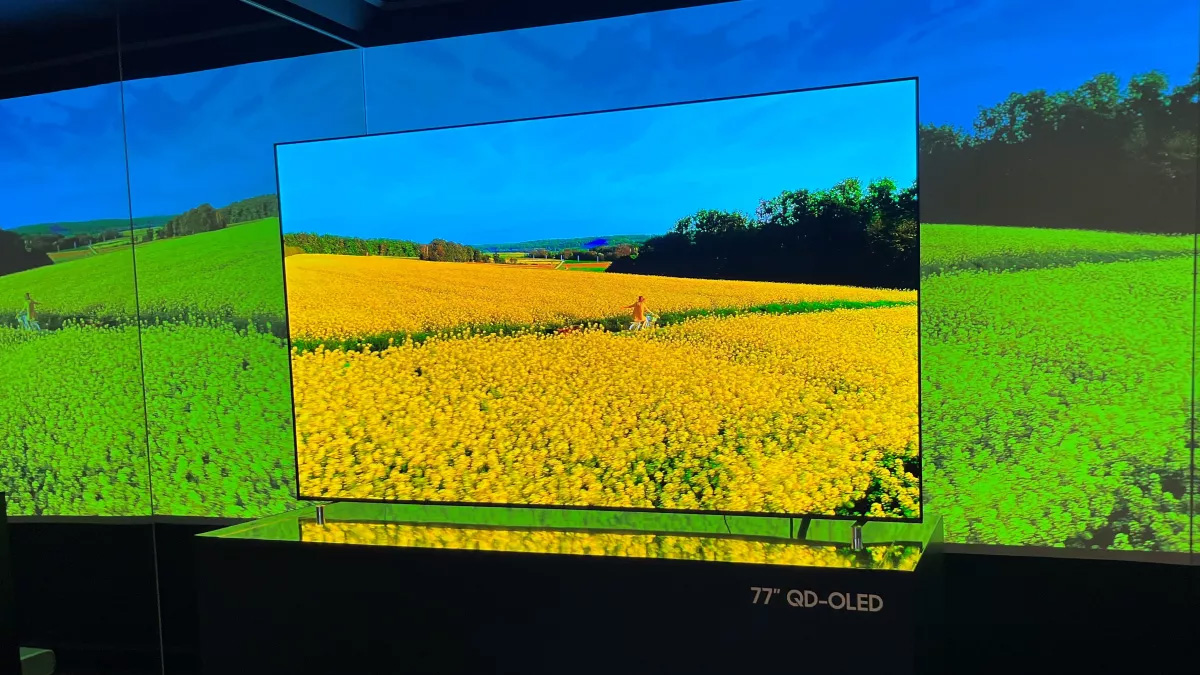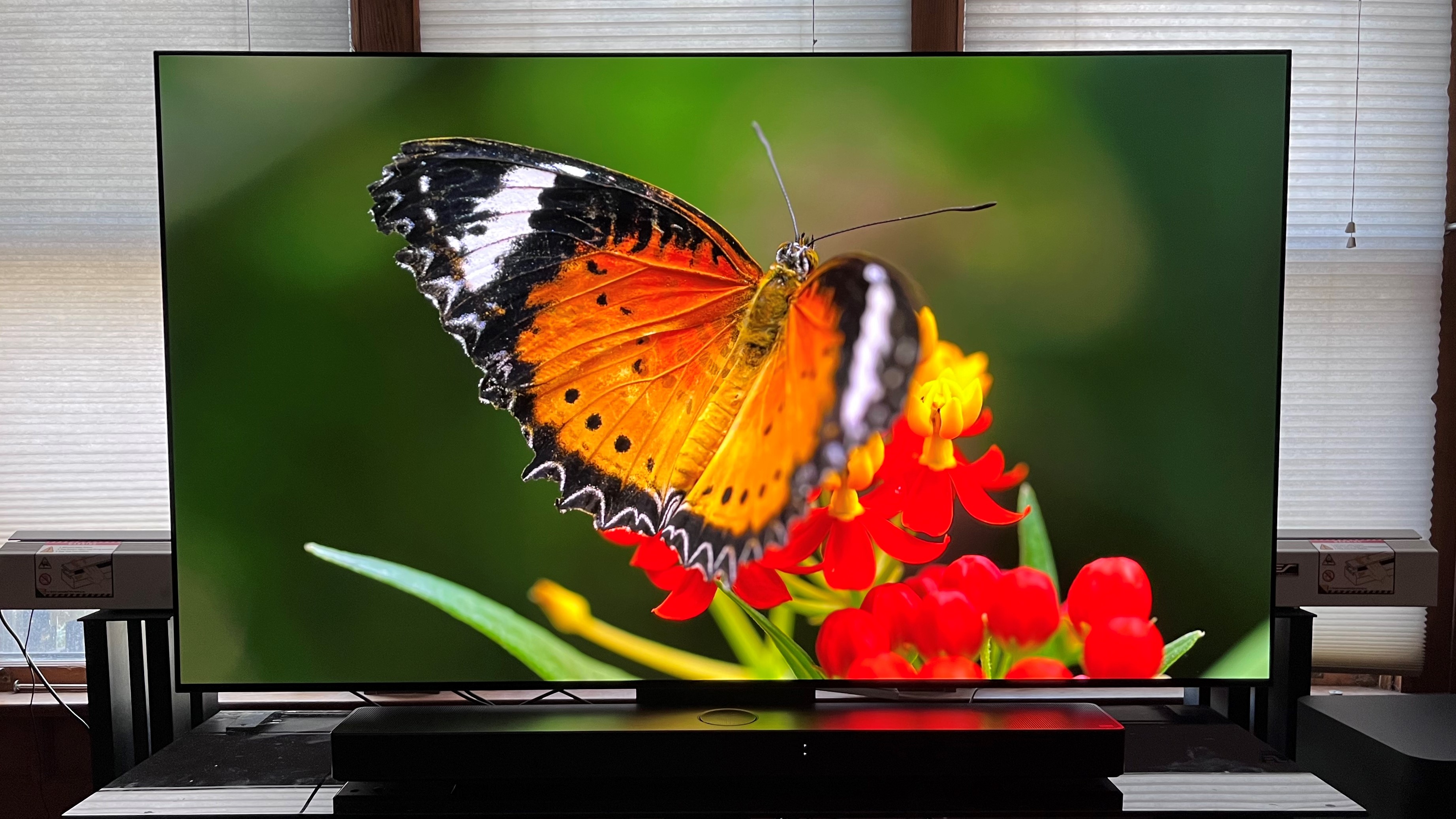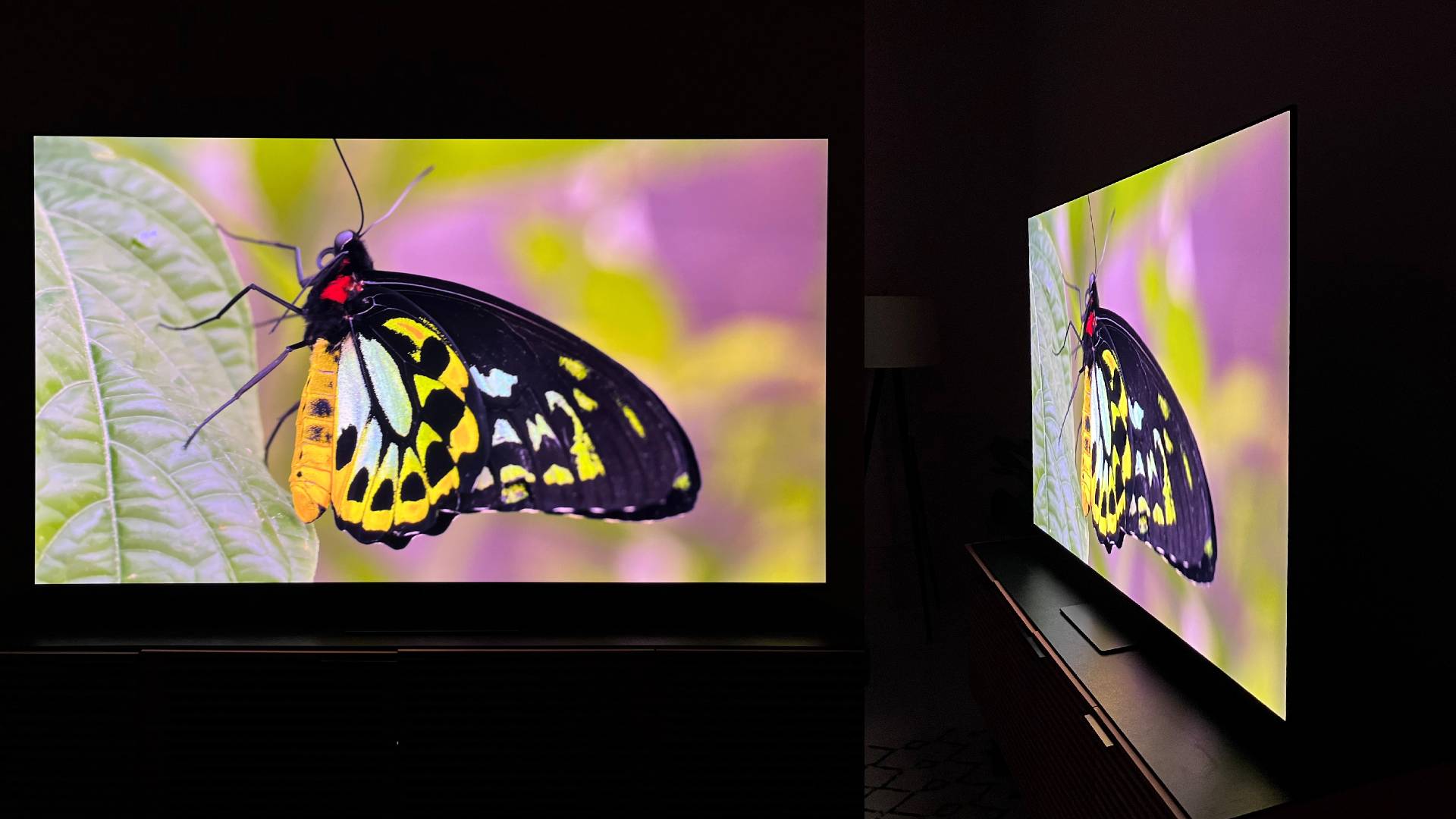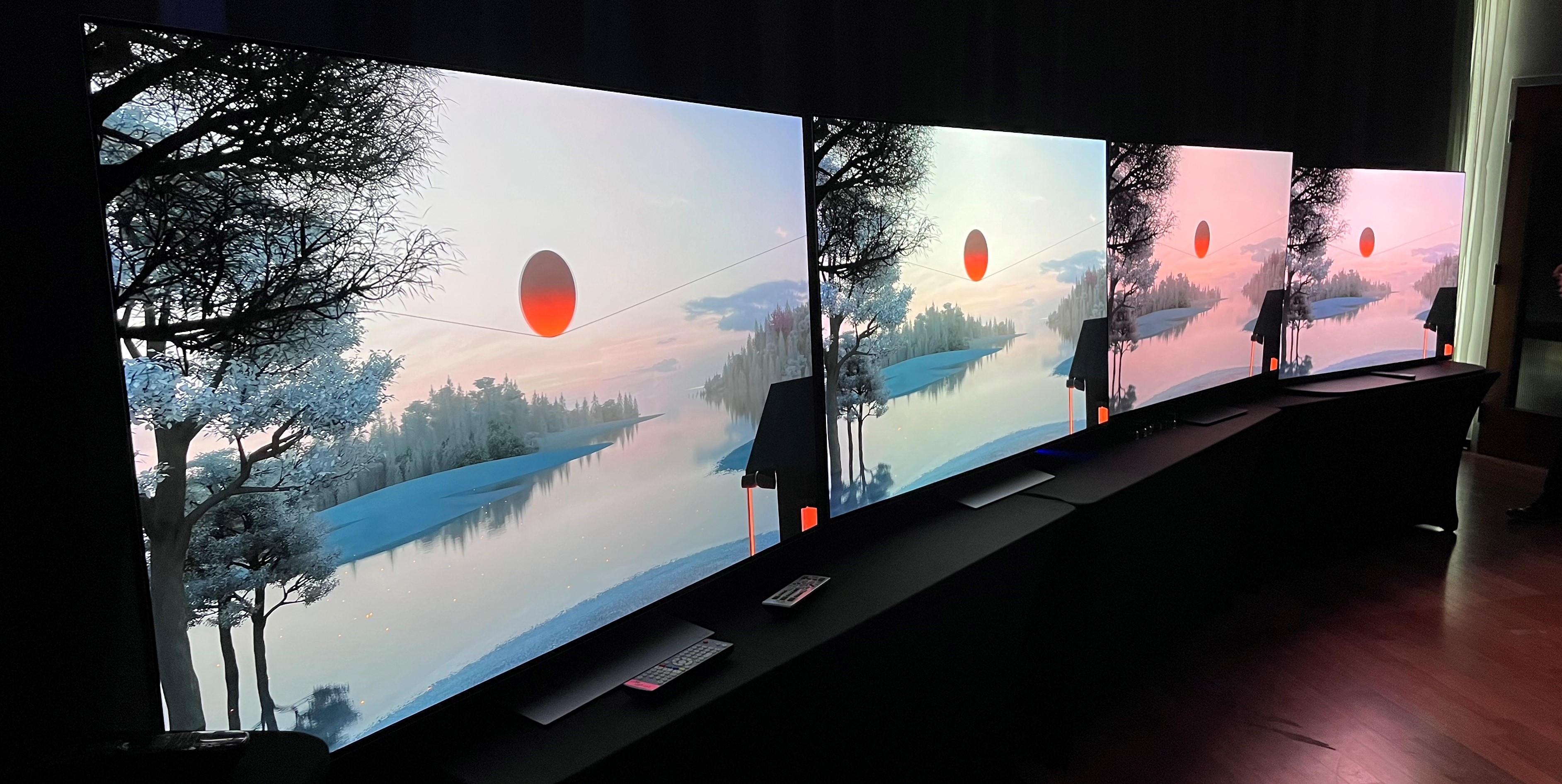
How bright are OLED TVs? It’s a tricky question. OLED screens, once the reserve of high-end cinephiles, are now ten-a-penny in today’s TV market, and that means there’s a host of different brightness technologies at work in different models.
There’s traditional OLED, OLED Evo, and QD-OLED, each working their magic in slightly different ways – and challenging the conception of OLED as a ‘dim’ technology compared to its LCD counterparts.
These days, OLED displays are found in some of the best-looking and best-priced screens out there, and as TV brands such as LG and Panasonic promise ever-brighter evolutions of their OLED TVs, it’s worth pinning down exactly what’s been changed, and which OLED screens are really the brightest around.
OLED TV brightness: what is it?
When we talk about brightness, we can mean a few different things, but it usually boils down to peak vs average brightness.
Peak brightness is how bright a screen can get in a limited area, as the brightest possible part of an image – this is important for good highlights, helping things like lamps, fires, skies, and other light sources in your TV content stand out against the rest of the screen, and generally ensure good contrast between light and dark objects.
Average brightness refers to how bright the entire screen can get on the whole. You can have high average brightness, but limited peak brightness, and the latter is more important for a high-contrast picture – but without a high average brightness, it’s easy for an image to get washed out by environmental light, and leave your TV with dark patches that ruin the picture by reflecting other objects in the room around you. It’s a complicated situation, then, but generally you want a TV that can go bright when it comes to both peak and average brightness, with a good level of brightness control to leverage both metrics effectively.

OLED TV brightness: OLED vs OLED Evo
OLED TVs are generally seen as ‘dimmer’ than their LCD or Mini-LED counterparts, given that OLED uses self-emissive pixels rather than a scalable backlight – it’s just harder to illuminate the entire picture effectively. That’s fine if you’re watching in dark rooms in the evening, but can be tricky maintaining visibility in other situations – not everyone has a perfect home cinema room with blackout curtains, after all.
There’s been a lot of progress over the past few years, though, to the extent that OLED TV makers are annually boasting about 20-30% increases compared to conventional OLED tech – even 70%, according to LG Electronics.
We’re told that OLED evo, in its basic form, comprises a specialized META software that, in tandem with an advanced a9 processor, helps draw out more brightness from an OLED display – that’s what you find in the LG C3, this year’s iteration of the bestselling C Series OLED, and has featured in high-end LG OLEDs for the past couple of years in some form.
Meanwhile, the flagship LG G3 “also adds a hardware element to control the light” – which LG describes as “Light Control Architecture”, and will reportedly reach that 70% figure, hitting 1500 nits average brightness if not more.
This is likely the same technology as the Micro Lens Array (MLA) manufactured by LG Display (which ships panels to LG Electronics) and used in the Panasonic MZ2000 OLED. MLA packs in thousands of microscopic lenses per pixel, helping to boost brightness by focusing the light more effectively, and possibly even boosting viewing angles.
Today’s OLED TV manufacturers are still pushing out conventional OLED models for lower budgets, though, and these offer deep blacks and effective contrast, if not quite the same brightness levels as the advanced screens mentioned above.

OLED TV brightness: where does QD-OLED fit in?
QD-OLED is a relatively new challenger, so far only released by Samsung. This hybrid technology uses both an OLED panel and the quantum dot layer deployed in Samsung’s QLED TVs, which is where the acronym QD-OLED comes from.
Whereas LG’s OLED screens use a white sub-pixel to help make the image brighter (and sometimes styled as ‘WOLED’), Samsung’s technology uses a self-emissive layer coated in quantum dots and pushing out blue light instead of white. Samsung claims this increases HDR performance and brightness compared to traditional WOLED.
We saw this play out in last year’s Samsung S95B TV review, one of the first QD-OLED screens on the market. We wrote that “Essentially the S95B is delivering just under 10% more brightness in all modes than the LG G2. While this might not be a truly revolutionary difference, it’s easily enough to make its presence felt in pretty much every frame of picture.”
And in our Samsung S95C review, we found that the company’s new QD-OLED model for 2023 delivered almost 40% more brightness than its S95B predecessor.

OLED TV brightness: which TV is best?
Brightness is only one metric for measuring the performance of a good TV. There’s also the build quality, the interface, the color volume, the contrast, and the like to consider – which we do, thoroughly, when reviewing the best TVs.
But there’s a reason brightness has become a key target for TV brands trying to out-do each other – because an effectively bright screen helps infuse colors with life, and ultimately make the images on your screen visible. Brightness needs to be implemented well, rather than simply ratcheted up to 11, but it’s still a good starting point for judging the quality of any given screen.
Our initial hands-on LG G3 review suggests that, thanks to its MLA feature, it could be a game-changing screen with brightness beyond any LG OLED TV screen before it – even if it’s matched by the Panasonic MZ2000 that makes use of the same technology. That said, Samsung and Sony’s QD-OLED models are no slouch, and seemed to have the upper hand in 2022.
For anyone not wanting to spend several thousand pounds on the best OLED TVs out there – all of which will pack a punch – then the brightness question will come down to one thing: do you need a baseline of brightness to ensure good visibility and few reflections on your TV? If not, then a conventional, lower-cost OLED is likely the best quality you can get for the price – but otherwise an LED set may be the way to go.







